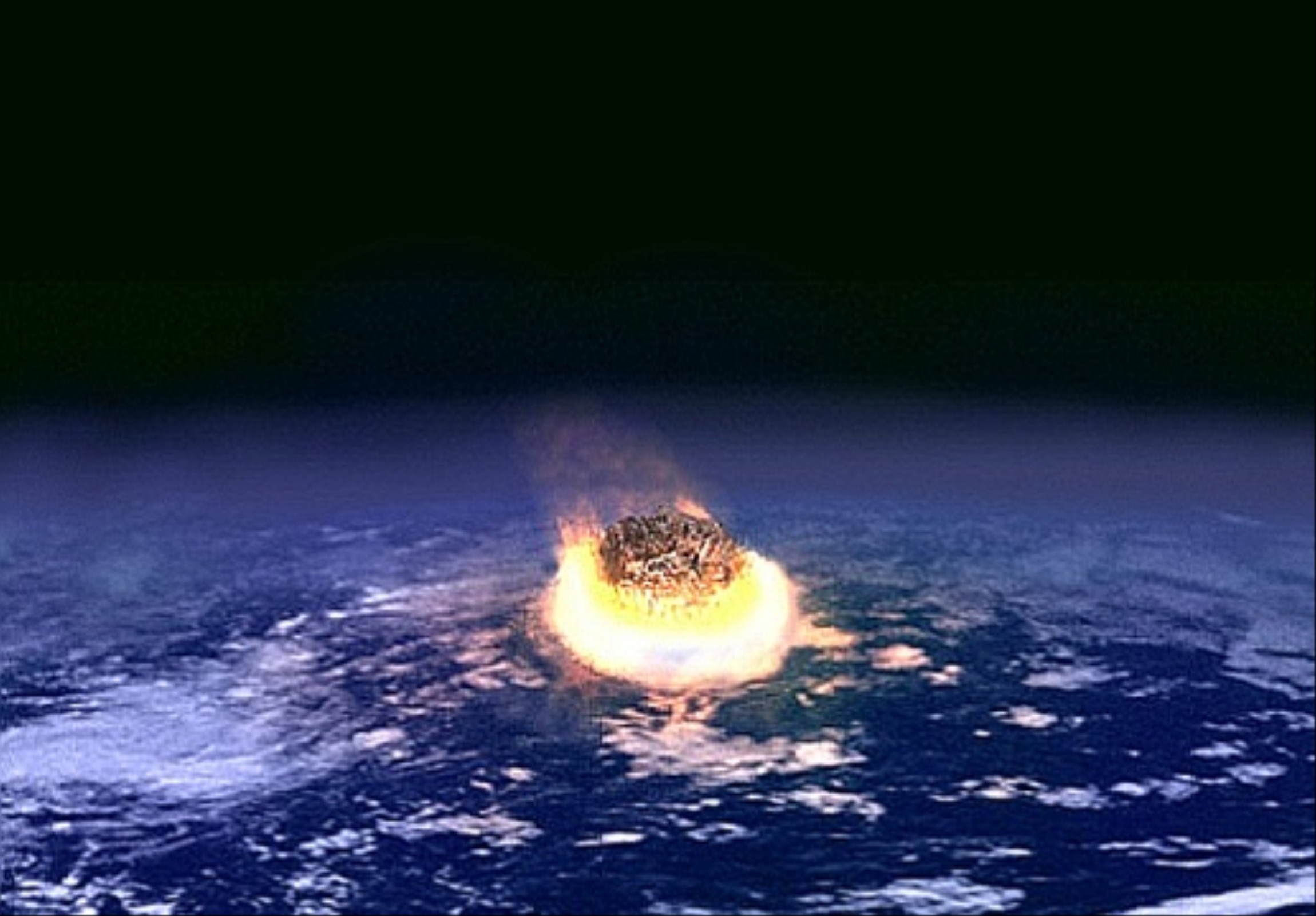
A common and persistent theme throughout “Ice and Stone 2020,” and indeed one of the primary reasons the “small bodies” of the solar system are of such high interest in the first place, is the threat they pose to Earth – or, at least, to our civilization and way of life here on Earth – via impacts. I have witnessed the growing awareness of this threat over the past few decades, which has included the ever-increasing number of discoveries of Earth-approaching objects; the realization that the major mass extinction at the end of the Cretaceous Period 66 million years ago (and perhaps other mass extinctions as well) was very probably the result of an impact – with the likely identification of the resulting crater off the north coast of the Yucatan Peninsula of Mexico; and events such as the impacts of the fragments of Comet Shoemaker-Levy 9 into Jupiter in 1994 and the airburst explosion and impacting meteorite over Chelyabinsk, Russia in 2013. (All of these are discussed in previous “Ice and Stone 2020” presentations.) This threat has also made its way into the popular psyche as well, which is reflected in various forms of literature and entertainment – not always necessarily accurately – that have come out within the fairly recent past.
This growing awareness is also reflected in the increased number of spacecraft missions to these objects and in the comprehensive survey programs that started becoming operational at the very end of the 20th Century – these again being discussed in previous “Ice and Stone 2020” presentations. As of now, the survey programs have likely identified well in excess of 90% of the large potentially threatening objects, i.e., those that could produce a global catastrophe and end civilization, and most of the remainder should be detected within the not-too-distant future. Smaller objects, i.e., those that can cause damage on a regional scale, are also starting to be identified, although these will continue to be an area of concern, as are also objects that can cause local damage such as those that caused the Tunguska event in 1908 and the Chelyabinsk event in 2013. The one other type of object that will always remain a cause of concern for at least the near- to intermediate-term foreseeable future is the long-period comets, since these are not discoverable until a relatively short period of time before a potential impact, and many of these are in retrograde orbits that, should they hit, will do so at a high relative velocity and thus liberate very large amounts of kinetic energy. Fortunately, these objects are quite rare compared to the asteroids and short-period comets that inhabit the inner solar system.
The identification of a potentially threatening object is just the first step in the overall process of mitigating the threat any such object might pose, of course. The next step, quite obviously, is determining what to do once that object has been found. In practice, it is very unlikely that any large threatening object will be found that is already certain to impact Earth; rather, as was covered in a previous “Special Topics” presentation, additional astrometric measurements and refined orbital calculations will constrain the probability of an impact – and, in the vast majority of cases, eventually eliminate the possibility. For the very rare cases where that does not happen and the likelihood of an impact is confirmed, the process then turns towards what physical actions to take to reduce and, hopefully, eliminate the threat. Additional data gathering, both to identify the time and location of the impact, as well as to collect information about the physical nature of the impacting object, will continue to be a part of this process.
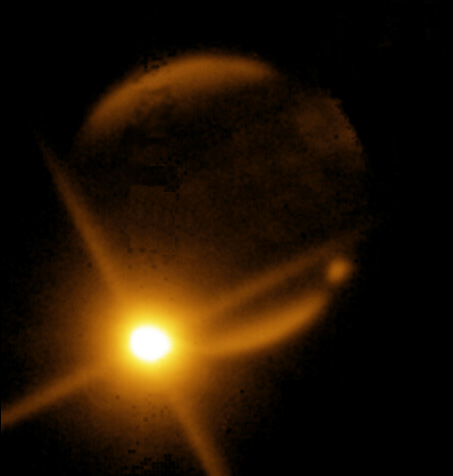
A common practice in popular fiction on this subject involves the usage of nuclear explosives to destroy the incoming object. In reality, however, this is not an especially effective way to neutralize the threat from such an object. Many asteroids are “rubble piles,” i.e., aggregates of small pebble-sized particles loosely held together by the object’s combined self-gravity. A nuclear device might disrupt part of such an aggregate but, depending upon the overall size of the incoming object, might leave the rest relatively untouched. Even the disrupted regions might start to re-coalesce. For a more solid object, the nuclear explosion would not destroy it but rather would fragment it into several pieces. People on Earth would then face the decision whether to have one very devastating impact by a large object or instead a series of slightly less devastating impacts by several somewhat smaller objects. In any event, such an approach could only properly be considered as a last resort, to be utilized only after other mitigation attempts have failed.
The entire point of the comprehensive survey programs is to identify any potentially threatening objects well in advance of any possible impact. Indeed, for any objects large enough to pose any kind of global or regional threat we should have at least a couple of decades of advance notice. It helps to remember that, for an impact to occur, an object must have one of its “nodes,” i.e., the two points where it crosses the plane of Earth’s orbit, right at Earth’s orbit, and must arrive at that node at the same time that Earth is at that same point. Since Earth’s orbital motion causes it to travel its own diameter in just over seven minutes, delaying (or advancing) and impacting an object’s arrival at the node by that amount of time can prevent an impact. A tiny change in an object’s orbital motion twenty years in advance can accordingly create a non-trivial change in its location twenty years later.
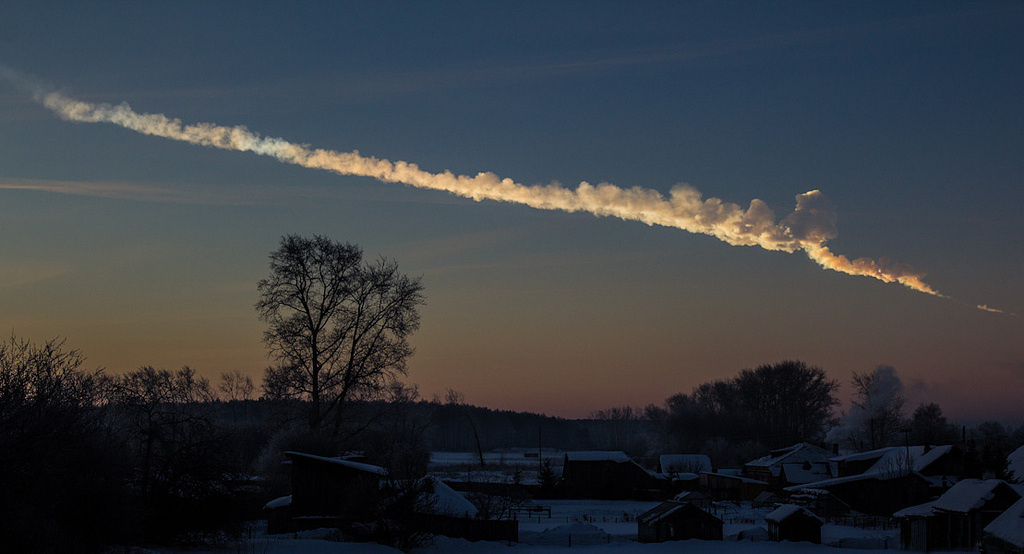
A number of potential strategies for introducing such changes and deflecting a threatening object’s later trajectory have been devised and are being studied, both by governmental agencies from various nations – for example, NASA’s Planetary Defense office – and national coalitions, and by private organizations such as the B612 Foundation that was co-founded by former Apollo astronaut Russell Schweickart. The particular strategy and technique that might be most appropriate for a specific object can depend upon that object’s size and physical make-up as well as the amount of lead time that is available.
The exploding of a nuclear device, not on an object after impacting it but rather close to its surface, could deflect it slightly by means of its resulting shock wave. Such an approach could be effective against a “rubble pile” asteroid since the particle aggregate would not be split apart by the explosion. The heat produced by such an explosion could vaporize particles near the surface and eject them in the same manner as the thrust of a rocket engine, thereby giving the asteroid a soft “nudge.”
Impacting an object, not with an explosive device but instead with an inert massive projectile, can make a small deflection in that object’s path. Indeed, the impacting projectile of the Deep Impact mission – discussed in previous “Ice and Stone 2020” presentations – introduced tiny changes in the orbital motion of its destination, Comet 9P/Tempel 1. This approach is the rationale for NASA’s upcoming Double Asteroid Redirection Test (DART) mission planned for launch in July 2021. DART’s destination is the near-Earth asteroid (65803) Didymos, or more correctly its small moon that has recently been named Dimorphos; the objective is for DART to impact Dimorphos and attempt to deflect its orbit. An accompanying CubeSat from the Italian Space Agency dubbed Light Italian CubeSat for Imaging of Asteroids (LICIA), a later ESA mission, Hera, and ground-based observations will hopefully be able to detect any changes in Dimorphos’ orbit.
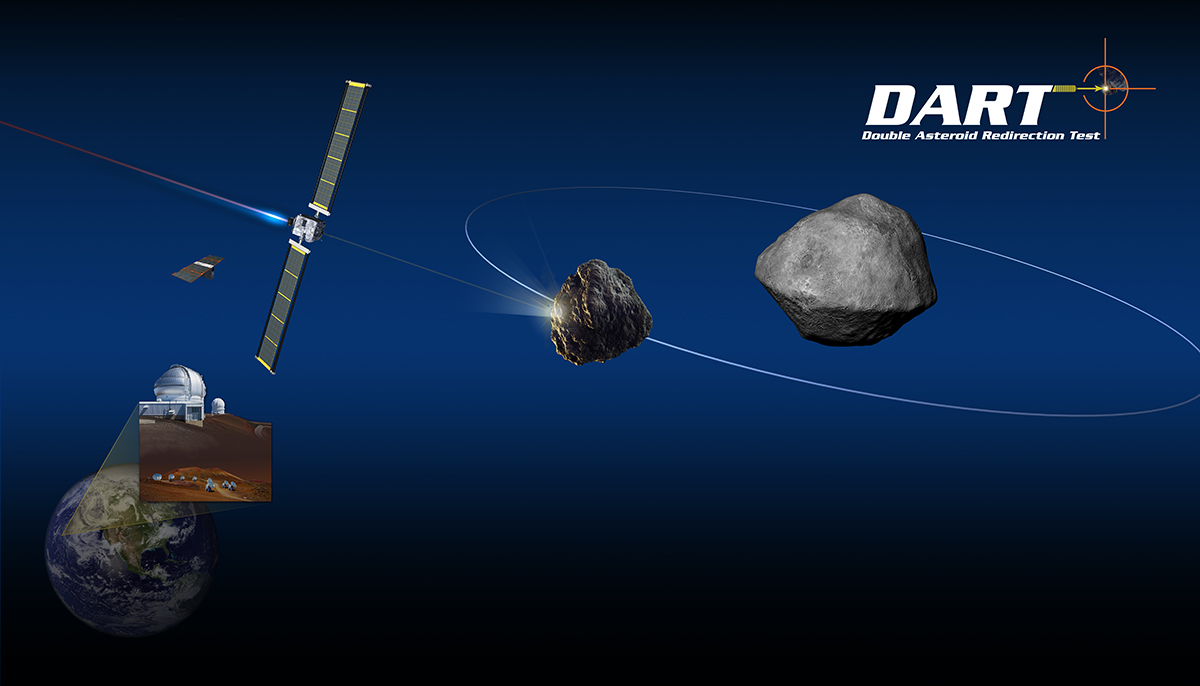
In some cases, it might even be possible to impact an asteroid with a smaller asteroid and deflect the larger object’s orbit via the same principle. Although this wasn’t its primary objective, NASA’s since-canceled Asteroid Redirect Mission would have tested the potential feasibility of such an approach. Should such an approach prove feasible at some point in the future, the list of “Easily Retrievable Objects” produced in 2013 by Daniel Garcia Yarnoz and colleagues – referenced in previous “Special Topics” presentations – includes some asteroids that could potentially be utilized in such an endeavor.
In principle, a rocket engine could be attached to an asteroid, with its orbital trajectory then being affected via application of Newton’s Third Law. In practice, this would be quite difficult to implement; among other things, many Earth-approaching asteroids are rapid rotators, which creates issues with not only the landing and placement of such an engine but also its overall effectiveness. (Perhaps the placing of an engine at one of the rotational poles could alleviate these issues in part, although there is evidence that at least some objects exhibit a complex rotational pattern involving precession as well as rotation.) There is also the issue of providing enough fuel to power the rocket.
A variation of this idea is the so-called “mass driver,” which is analogous to a rocket engine in that it utilizes ejection of material and application of Newton’s Third Law, however, it utilizes the asteroid’s own material as its “fuel.” Such a device might be reasonably effective with a “rubble pile” asteroid, although the above issues involving the asteroid’s rotation would still create difficulties.
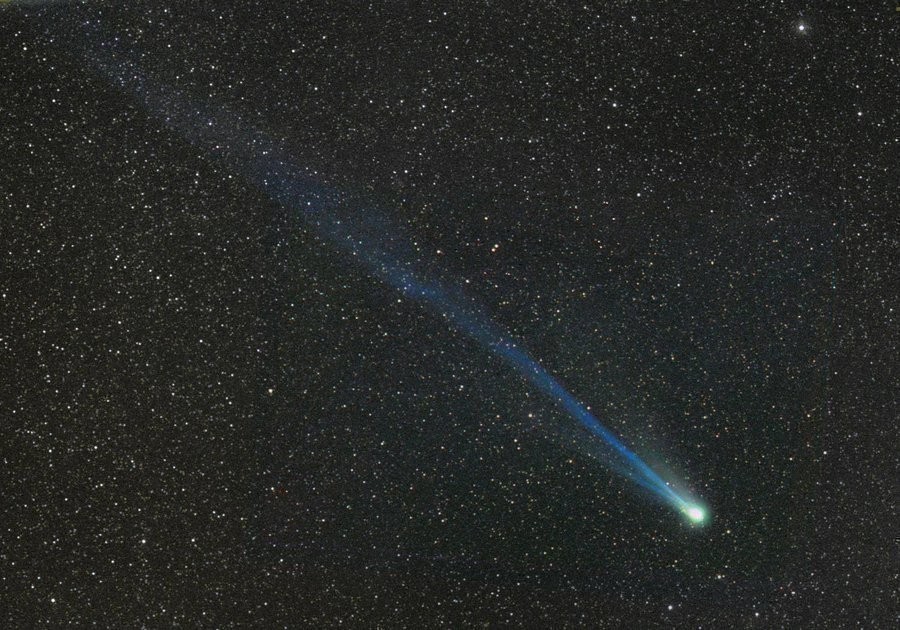
Another approach is the “gravity tractor,” wherein a massive object, for example, a large unmanned spacecraft or perhaps even one of the aforementioned “Easily Retrievable Objects,” is maneuvered close to the incoming object. The two objects would then be gravitationally attracted to each other, and if the introduced object could be slowly moved – perhaps by means of an attached low-thrust rocket engine – the two-object system as a whole would accordingly be moved. Such an approach would take a long time – many years – to yield results, but if we had a significant amount of lead time with which to work this type of approach may ultimately be the most effective. It also has the advantage that it can be used with both “rubble pile”-type asteroids and more “solid” objects.
A somewhat more exotic approach involves using the energy contained within light to slow down incoming objects – something that could be especially effective against the low-mass particles making up “rubble pile” asteroids. Large orbiting lasers could potentially do this, but the deployment and usage of such devices is not economically feasible at this time. Large orbiting mirrors that could redirect and strongly focus sunlight on these objects could also be effective, and at least theoretically could be developed and deployed within the not-too-distant future if circumstances warrant.
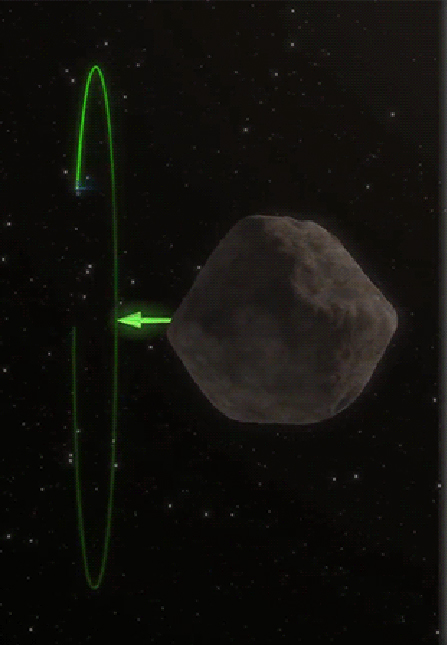
Most of the aforementioned techniques are meant for utilization on somewhat large objects where we have sufficient advance warning for the necessary devices to be deployed. However, as previously mentioned for the foreseeable future there will remain a threat from the smaller objects which can cause damage over a substantial local area and which cannot be detected until they are close by – at best, we may have a few days’ warning. Some small-scale versions of a few of the above methods might work in such instances, although on the other hand some of the ASAT systems that have been developed could perhaps be refocused and might at the very least alleviate some of the potential damage. In any event, we may at least have enough lead time to implement effective evacuation plans, and it should be kept in mind that, since over 70% of Earth’s surface area is open ocean, a similar percentage of impacts would occur there as well, which creates the potential for tsunamis.
One of the items in this week’s “This Week in History” events involves Comet 109P/Swift-Tuttle, the parent comet of the Perseid meteor shower and a future “Comet of the Week.” In a 1995 study British astronomer John Chambers calculated that on September 15, 4479, Comet Swift-Tuttle will pass so close to Earth that “it is not possible to make accurate predictions of its future motion past that point,” and he estimated the possibility of a collision as being one in a million. This comet’s nucleus is apparently quite large, as comet nuclei go, with most estimates being in the range of 30 km, and since the comet’s orbit is retrograde the relative velocity would be very large, over 55 km per second; the energy liberated during any impact would dwarf that of the K-T impact event 66 million years ago that destroyed the dinosaurs. Our descendants still have almost 2½ millennia to keep track of the comet and refine the circumstances of the 4479 close approach; if it becomes necessary, that should hopefully be enough time for them to develop whatever techniques they might need – perhaps based on some of the above ideas, or perhaps something we have no conception of now – to deal with the threat.
More from Week 38:
This Week in History Comet of the Week Free PDF Download Glossary
Ice and Stone 2020 Home Page


